2013 Trek Fuel EX 9.8
(discontinued)
| Where To Buy | |||
|---|---|---|---|
Free standard shipping on all bikes (continental U.S. only).
Flat rate shipping to Hawaii and Alaska. |
Free standard shipping on all bikes (continental U.S. only).
Flat rate shipping to Hawaii and Alaska. $6,749.99
|
||
Fuel EX 9.8 XT Gen 6
$6,749.99
|
|||
Fuel EX 9.8 GX AXS Gen 5
$5,799.99
|
|||
Fuel EX 9.8 GX AXS Gen 6
$5,999.99
|
|||
Fuel EX 9.8 GX AXS T-Type Gen 6
$6,999.99
|
|||
Fuel EX 9.7 Gen 6
$4,699.99
|
|||
Fuel EX 9.9 XTR Gen 6
$9,549.99
|
|||
Fuel EX 9.9 XX1 AXS Gen 6
$9,749.99
|
|||
Fuel EX 9.9 XX AXS T-Type Gen 6
$11,000.00
|
|||
Fuel EX 9.9 X0 AXS T-Type Gen 6
$7,999.99
|
|||
Free shipping on orders over $50 (continental U.S. only).
International shipping available. Some exclusions apply. |
|||
Free shipping on orders over $50 (continental U.S. only).
International shipping available. Some exclusions apply. |
|||
Reviewed by Steve Wentz, Joe Schneider, and Brandon Turman // Photos by Shawn Spomer and Brandon Turman
From its creation, the Fuel EX has been the "go-to trail bike" in Trek's lineup. They say it's for the rider that "can't decide between a rugged, capable long-travel trail bike or a nimble, lively XC bike." That's a big slot to fill, especially for a bike with just 130mm of travel and a 68-degree head angle. Curious if it really could meet the needs of both ends of the spectrum, we had the boys from Wisconsin send out a recently updated Fuel EX 9.8 for our 2013 Test Sessions in Southern Utah.

Fuel EX 9.8 Highlights
- OCLV Mountain Carbon main frame and seatstay, alloy chainstay
- 26-inch wheels
- 130mm (5.1-inches) of rear wheel travel
- Trek Full Floater suspension platform with ABP
- E2 tapered head tube
- 68-degree head angle
- 73-degree seat angle
- 338mm (13.3-inch) bottom bracket height
- 425mm (16.7-inch) chainstay length
- BB95 bottom bracket with ISCG05 tabs
- 142x12mm rear through axle
- Measured Weight (size 18.5): 26-pounds, 11-ounces (12.1kg)
- MSRP $5,249
Over the past few years, the Fuel EX has seen a number of small tweaks. Most recently, they made the decision to make it a much more capable ride for 2013. Updates from the 2012 frame include 10mm more travel front and rear, a 5mm lower sagged bottom bracket height, 5mm shorter chainstays, lower standover height, wider bars, ISCG05 tabs, and slightly tweaked pivot placement. It may not sound like much, but rest assured that those few millimeters here and there made a huge difference. Given the current trend toward slacker bikes, the fact that Trek stuck with a 68-degree head anglemay be surprising to many.
With seven(!) different models to choose from, ranging in price from $1,870 to $8,400, the Fuel EX line is just as diverse as the terrain they say it can tackle. Add in five sizes per model and you've got a whole lot of variations of the same bike to choose from. Options are good, and in this case it's very likely that Trek has one to precisely fit your budget and precise size needs.
Our test bike was the Fuel EX 9.8 model, which is the second-tier in the lineup and one of two carbon offerings. The size 18.5-inch build weighed in at just 26.7-pounds, the second lightest among the 22 bikes in our Test Sessions. Key to the weight of the bike is the surprisingly light Optimum Compaction, Low Void (OCLV) Carbon main frame and seatstay. Trek prides themselves on the in-house testing they do on all of their carbon models, ensuring they're built to withstand some nasty hits.
Internal routing for the rear derailleur, front derailleur, and seatpost add to the sleek look of the frame and really clean things up nicely, though they can be a hassle when it comes time to do maintenance. Additional frame features include a post mount disc brake, direct mount front derailleur, exclusive BB95 bottom bracket, an integrated tapered headtube (no headset cups needed), and a rubberized downtube guard.

Out back, the Fuel EX relies on Trek's proven Full Floater suspension design coupled with a magnesium EVO link and Active Braking Pivot (ABP) at the rear axle. For 2013 they moved the main suspension pivot forward a bit, modifying the already progressive leverage curve every so slightly. This resulted in a 5mm lower sagged bottom bracket height, flattened the anti-squat curve a bit for better pedaling efficiency throughout the range of travel, and also let them use a higher base compression setting in the Dual Rate Control Valve (DRCV) FOX Float CTD shock for improved pedaling. Trek's DRCV technology uses an internal plunger to cycle between two chambers, combining the pedaling benefits of a low volume shock and the big hit cushion of a high volume one.
A similar DRCV system is also integrated into the FOX 32 Float CTD fork, and for 2013 they've allowed the user to adjust the progressiveness of the fork by the addition of some easy to add volume spacers.
On The Trail
Wanting to see this bike's performance over a variety of terrain types, we tested it on three different trails in the Hurricane and St. George, Utah area. First, Brandon piloted it along JEM to Hurricane Rim, which offered some fast, flowy cross-country terrain and a handful of rugged rock sections. Joe, our cross-country specialist, chose to ride the entire JEM trail from top to bottom, pinning it the entire way. Later, Steve hopped on and immediately started sending it off anything and everything on the drop and jump-filled Barrel Ride trail.
Thanks to new, wider Bontrager bars for 2013, we can't complain that much about the bike's cockpit. Even so, we found things a little on the skinny and long side, opting to swap the 720mm bar and stem out for something a bit wider and shorter. Others will really appreciate the added reach on steep climbs. Regardless of the swap, it had a really nice feel, was comfortable, balanced, and centered, if only a little long in the reach department. The bars have a very low rise, so the addition of some spacers under the stem may be needed for some riders.

Our immediate impressions were very positive, and we were surprised by just how incredibly fun and flickable the Fuel EX is. The bike was a blast to ride from the get go, and its responsive, light feel encouraged us to really get after it. Thanks to the short 16.7-inch chainstays, picking the front end up to manual was very easy to do which instantly turned the trails we rode into a playground. Whether riding aggressively or just cruising, the bike responded well to inputs and changing lines at a moment's notice was a breeze. It felt planted in corners, and when we let off the brakes it tracked really well thanks to the stiff and predictable rear end.
Geometry wise, the Fuel EX offered nothing to balk about while descending, even with what sounds like a steep head angle in comparison to many other trail bikes. The chosen numbers gave it a very alert, precise feel through all terrain types, and we never felt like we were going to get pitched over the bars or knife in turns. While it was slightly taxed in the super rough stuff, it offered a great compromise between downhill stability and good climbing characteristics.
Rear shock performance was solid almost across the board. It had a very active feel, was supple and active in the beginning of the stroke providing good small bump compliance, gave plenty of support during big compressions, didn't bottom off some sizable drops, and offered something solid to push against when pumping or sprinting to gain speed. On a few occasions, we did feel the rear end kick out a little bit during sustained chatter and through successive sharp square edge hits. Overall, the rear suspension outperformed its 130mm specification and showed that it's capable of lots more. Rear suspension performance was good enough, in fact, that it far outclassed the front end of the bike.
In the stock configuration, we found ourselves wishing for better bottom out control in the DRCV FOX 32 Float CTD fork which seemed to wallow a bit in the mid-stroke. Luckily that's an easy thing to do given the updated system for 2013. After the addition of a few volume spacers we're betting the issue would have been alleviated. One other minor issue we encountered with the fork was a recurring noise midway through the stroke, which we assume was the second DRCV chamber activating. Stepping up to a FOX 34 would be a welcome upgrade from the stiffness perspective, especially given the bike's all-around nature. (Editor's Note: Turns out FOX doesn't make a 130 or even 140mm fork with 34mm stanchions. We'll keep wishing!)

One of the things we loved most about the Fuel EX is its perceived weight - it's light and it shows. The bike wanted to take off, accelerate, and dart from one side of the trail to the other on command, making it feel every bit as light as the scale said. Rolling speed was also very good, especially when pumping came into the mix.
Out of the saddle sprints resulted in gobs of speed quickly thanks to good support in the suspension, a stiff frame, and super light tires. Bob was virtually nonexistent, and we'd classify the Fuel EX as a very good pedaling bike. Aided by a 73-degree seat tube angle, powering up climbs required less effort than we're used to, which says a lot given the range of bikes we've been riding recently.
Build Kit
There's a lot to love when looking at the components. From the Shimano XT brakes and drivetrain to the RockShox Reverb Stealth dropper seatpost, the build is made up of parts that are both reliable and durable. The only real value-minded concession for a bike this high-end is the use of Performance Series FOX suspension as opposed to the Kashima-coated and slightly more adjustable Factory Series. Then again, the price tag sits at $5,249, which is on the lower end of the carbon bike price range.
A variety of in-house Bontrager parts complete the build, including tubeless-ready wheels, tires, a titanium-railed saddle, stem, grips, and carbon bars. We found the wheels to be plenty stiff, the seat felt great, and the grips were nice and thin. Keeping the grips on the bike, however, presented a bit of an issue. In combination with the smooth carbon bars, the plastic-lined clamps couldn't get tight enough, forcing us to swap them out.

Perhaps the biggest thing we didn't like about the bike was the tire choice, but not for the reasons you'd expect. At just 580 grams, they were far too light for a bike that has "long-travel trail bike" duties written into its description. While impressively fast and great on hard pack, the super thin casings make the bike much less stable than it could be. We'd quickly add half a pound in exchange for more confidence during compressions, big hits, and really over any terrain. Even the front wheel would wander sometimes on the climbs, likely because the front end was too light for its own good. Some added girth in the casings and knob height (not width) might have just a little bit more traction and slow down its ever so slightly twitchy manners.
As we've mentioned countless times in our Test Sessions reviews, Shimano's XT brakes were excellent. Braking performance was never a concern, and having stoppers that can actually slow you down on a dime boosted the overall handling of this bike. One small gripe we had concerning the brakes, however, was the poor interface they have with the Reverb remote, which really limits you from finding that perfect position for both levers. Shimano does have an integrated shifter/brake lever solution that could help in this regard.
The Shimano XT drivetrain was also solid, though we would love to see a 2X system in place of the now outdated 3X crankset. Trek's exclusive BB95 bottom bracket was plenty stiff, though we did feel a bit a drag when rotating the cranks off the bike. On the bike this wasn't noticeable.
Chain noise was minimal thanks to the Shadow+ clutch system, and with the exception of the occasional chain slap on the inside of the seatstay and the tires pinging off rocks, the bike was very quiet.
Long Term Durability
It's tough to forecast long term concerns, but the bike as a whole seemed very reliable. Trek sweats the small details, has an impressive testing facility, and maintenance of the critical components seems well thought out. Worst case, the frame and Bontrager components are backed by a limited lifetime warranty with a five year condition on the swing arm.

What's The Bottom Line?
Did Trek succeed in making that go-to trail bike? That depends on what your definition is. If it's everything from lighting up the local cross-country loop to doubling up the rollers on a flow trail, yeah, they nailed it with the Fuel EX 9.8. If your definition includes occasional downhill use with a heavy dose of gnar, not so much. There are a lot of trail/all-mountain "do-it-all" bikes with a slightly more aggressive mentality that would be just fine in the bike park, but they likely wouldn't hold a candle to the Fuel EX in a race to the top or an all-day epic. It's every bit as fast as a cross-country race bike but a whole hell of a lot more fun to ride, and we dig the little niche that this bike fills.
An experienced rider that enjoys a precise feel will love this bike, as will a beginner that's just getting their bearings. It's super lively, laterally stiff, capable through the moderately rough stuff, and just flat out makes you want to go fast. Somewhere in-between oogling the candy blue paint job, hopping on for a second ride in the same day, manualing through dips, pumping through the turns, and generally having a blast on the trail, you'll thank us for the recommendation. Slap a slightly beefier fork and tires on there and you'll be in heaven.
Check out www.trekbikes.com for more info.
Bonus Gallery: 35 photos of the 2013 Trek Fuel EX 9.8
About The Reviewers
Steve Wentz - A man of many talents, Steve got his start in downhilling at a young age. He has been riding for over 17 years, 10 of which have been in the Pro ranks. Asked to describe his riding style he said, "I like to smooth out the trail myself." Today he builds some of the best trails in the world (and eats lots of M&M's).
Joe Schneider - During the day, Joe's busy solving complex mechanical engineering problems. When he's free, he's out crushing miles on his bikes and moto. He raced cross-country for several years, made an appearance on the Collegiate National Champs Omnium, turned Pro, and more recently shifted his focus to enduro.
Brandon Turman - Brandon likes to pop off the little bonus lines on the sides of the trail, get aggressive when he's in tune with a bike and talk tech. In 13 years of riding he worked his way through the Collegiate downhill ranks to the Pro level. Nowadays he's Vital MTB's resident product guy.
Specifications
| Where To Buy | |||
|---|---|---|---|
Free standard shipping on all bikes (continental U.S. only).
Flat rate shipping to Hawaii and Alaska. |
Free standard shipping on all bikes (continental U.S. only).
Flat rate shipping to Hawaii and Alaska. $6,749.99
|
||
Fuel EX 9.8 XT Gen 6
$6,749.99
|
|||
Fuel EX 9.8 GX AXS Gen 5
$5,799.99
|
|||
Fuel EX 9.8 GX AXS Gen 6
$5,999.99
|
|||
Fuel EX 9.8 GX AXS T-Type Gen 6
$6,999.99
|
|||
Fuel EX 9.7 Gen 6
$4,699.99
|
|||
Fuel EX 9.9 XTR Gen 6
$9,549.99
|
|||
Fuel EX 9.9 XX1 AXS Gen 6
$9,749.99
|
|||
Fuel EX 9.9 XX AXS T-Type Gen 6
$11,000.00
|
|||
Fuel EX 9.9 X0 AXS T-Type Gen 6
$7,999.99
|
|||
Free shipping on orders over $50 (continental U.S. only).
International shipping available. Some exclusions apply. |
|||
Free shipping on orders over $50 (continental U.S. only).
International shipping available. Some exclusions apply. |
|||





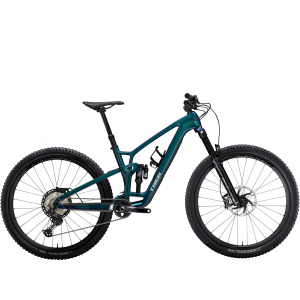
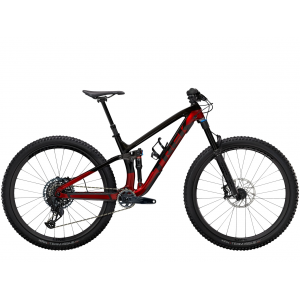
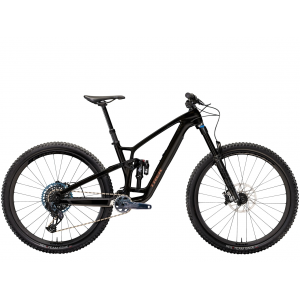

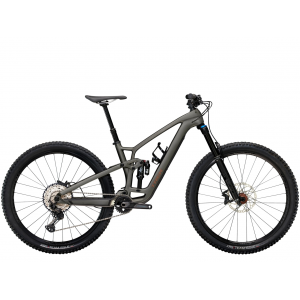
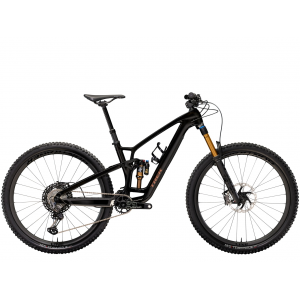
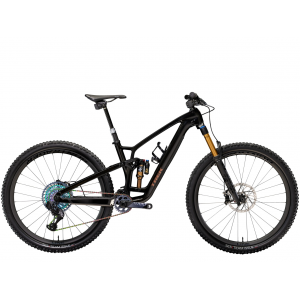
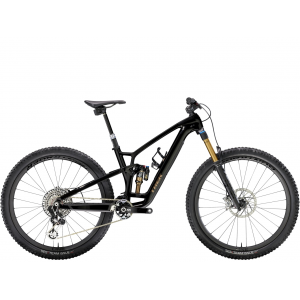





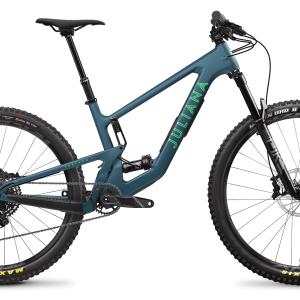
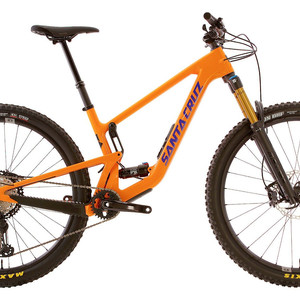
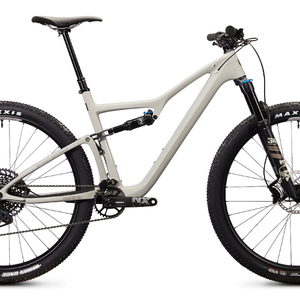
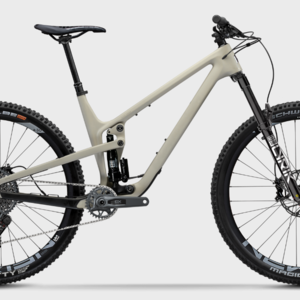
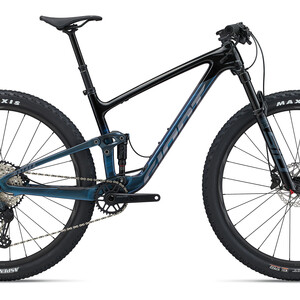








8 comments
Post a reply to: 2013 Test Sessions: Trek Fuel EX 9.8